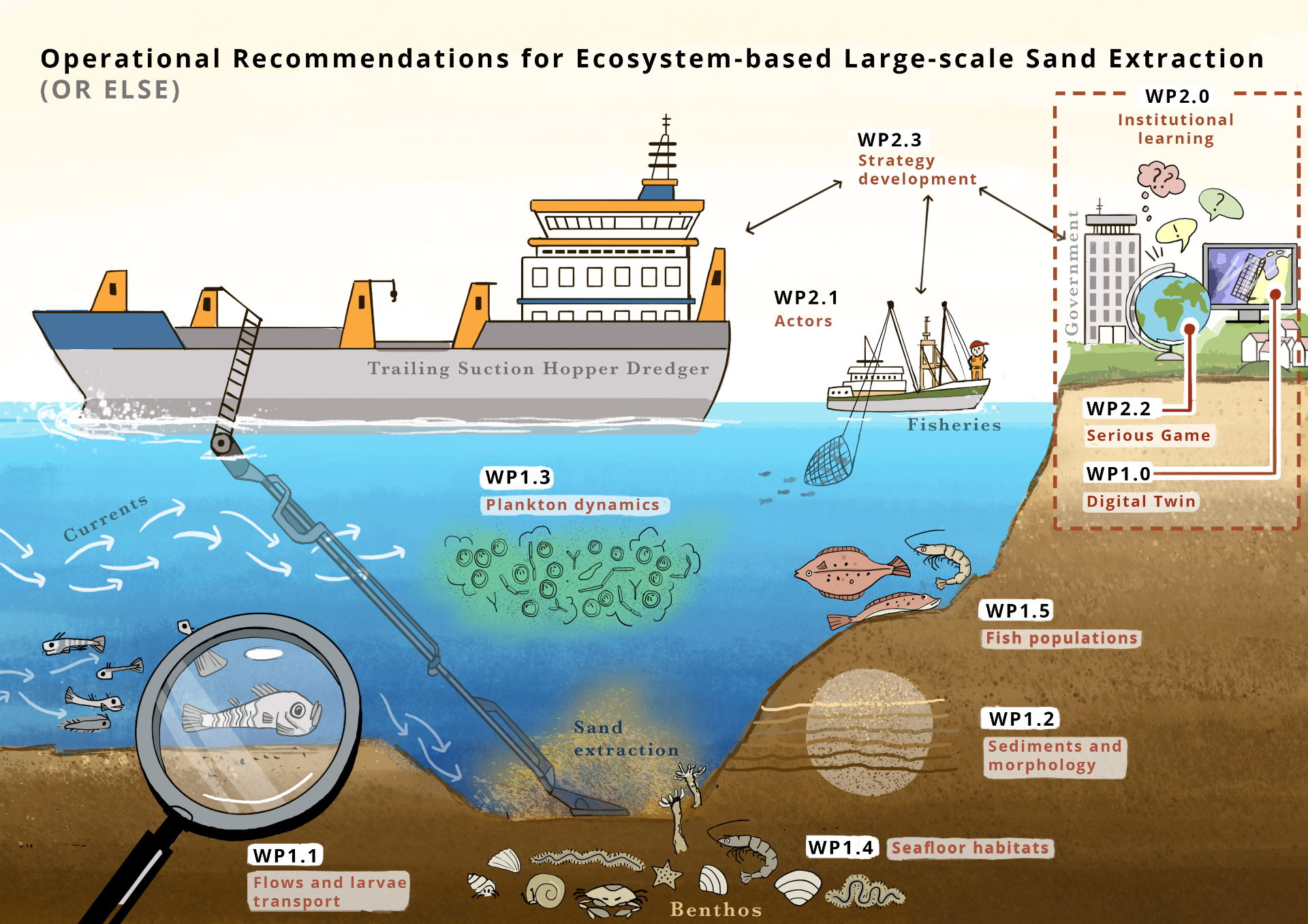Four years research into the effects of sand extraction in the North Sea
In the Netherlands, we extract a lot of sand, especially from the North Sea. Every year, we extract around 12 to 15 million cubic metres to protect our coastline, plus around 15 million cubic metres sand for roads, residential areas and for concrete. Every year, we dredge a stretch of seabed the size of the island of Schiermonnikoog by some eighty centimetres. But our need for sand is going to increase even more. Not only because we want to build more roads, houses and residential areas, but also because the rising sea level means that we need more and more sand for coastal safety.
Effects of sand extraction in the North Sea
“Sand extraction causes damage to life in and on the sea bed. Shells, worms, starfish and fish are sucked up and die,” says Dick van Oevelen, marine biologist at NIOZ. “Sand extraction can cloud the water so much that it has a negative effect on the growth of algae, the basis of the marine food chain, and its main grazers, the zooplankton.” Habitat of animals also changes because the grain size of the remaining sand is different. And locally the sea currents change because of the pits and gullies created on the bottom.

Thinking about how to leave the North Sea floor behind
"Because we need more and more sand, we need to think carefully about how we plan to leave the North Sea floor," says Martin Baptist, coordinator at Wageningen Marine Research. Take the sand extraction site for the Second Maasvlakte, for example. It was twenty metres deep. A great deal of fine sediment was later trapped in that area. This is alarming because the Dutch coast is also very important as a nursery ground for commercial flatfish species such as sole and plaice that live on sandy North Sea bottoms. The research consortium will now study, for example, in what shape, in what direction, with what gradients and to what depths sand can best be extracted. So that fishing for plaice and sole is not threatened. Fishermen are involved in the research because they know better than anyone which slopes produce the best catches.
"Our colleagues at Wageningen Marine Research will investigate which underwater landscape is favourable for juvenile fish, and therefore for the fishing community," says Johan van der Molen, researcher at NIOZ. "We will investigate how zooplankton, tiny animals that juvenile fish feed on, are affected by sand extractions, using laboratory experiments and models”. The models will simulate how sand extractions change the flow, the turbidity of the water and the growth of phytoplankton, the tiny algae that zooplankton feed on. The models will also include the effects of sand extraction on the composition of the sea bed, and on the animals that live in it.
Global problem
The extraction of sand is a global problem. It is a raw material that is not easily extractable in every location and that we need in ever-increasing quantities. Sand can be compared to fossil fuels: we extract more sand than nature can replenish. Due to the high demand for sand, rivers and beaches are being dug up, with major consequences for ecosystems, flood protection, groundwater levels and the navigability of rivers.
About the project
The project is led by Wageningen Marine Research and has been awarded the NWA ORC-call 2020/2021 at the same time as about 20 other research applications.
For more information, visit the NWO website.
Consortium:
Stichting Wageningen Research
Technische Universiteit Delft
NIOZ - Koninklijk Nederlands Instituut voor Onderzoek der Zee
Wageningen University & Research
Universiteit Twente
Stichting De Noordzee
Hogeschool Van Hall Larenstein
Deltares
Breda University of Applied Sciences
Rijkswaterstaat Zee en Delta
Boskalis
Van Oord
Producentenorganisatie (PO) Texel
PO Wieringen
Nederlandse Vissersbond
Geological Survey Netherlands
Ministerie van Landbouw Natuur en Voedselkwaliteit
Digishape
North Sea Advisory Council
International Council for the Exploration of the Sea -Working Group on the Effects of Extraction of Marine Sediments on the Marine Ecosystem (ICES- WGEXT)
KIMO Nederland en België